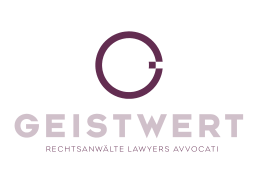non-human pARTy: GEISTWERT feierte seinen dritten Geburtstag
GEISTWERT’s Rechtsanwälte Rainer Schultes, Alexander Schnider, Max Mosing, Juliane Messner und Constantin Kletzer feierten mit einem Kaleidoscope der “non-human art” (siehe Details unten) ihr dreijähriges, erfolgreiches Bestehen – und mehr als 150 Mandanten, Kollegen und Freunden feierten mit! DANKE an alle, die dabei waren …
Hier ein kurzer Einblick: Link zum non-human-pARTy-Video
© 2017, Gute Macher Productions
***
Robotic Act
© 2017, now, Niki Passath
Niki Passath is engaged in his work with the relationships between man, machine and the surrounding nature. On the one hand he develops robots which draw their experiences as traces on different surfaces, on the other hand he is using the 3D-printing technology to transfer digital content back from the virtual to the reality.
Since the beginning of the industrial revolution the human, especially the working human, has increasingly adapted to a coexistence with machines. The human has become a prosthesis for the nonorganic body of the indus- trial factory. During early adaptation this occurred mainly on the material body, the hardware of humanity. Simple re- petitive movements on the assembly line became the tasks of the workers to fulfill those duties the machine could not.
The promise was that humans of the future will not have to work, machines will lighten the load. However, the importance of one’s identity being tied to her/his occu- pation became increasingly socially relevant. With the invention of the computer, machines have moved away from hardware towards software; machines began to acquire a brain. In this new epoch, is it possible that humans are still prostheses of the machine? Now not only attached to the body but also an amendment to its thinking? It can seem that with the wish of creating machines that think like hu- mans, we have also created humans that think like machines.
More and more a human defines itself by the work it does, no-matter how unnecessary or meaningless this activity is. It is often the case today that there is no need for working humans, as artificially intelligent systems can control and realize the whole cycle of industrial production. What do we do now that the human is redundant?
Presented by GEISTWERT
***
Excerpts of REVISITED
© 2016, Markus Oberndorfer
Markus Oberndorfer gives us a small insight into his extensive mixed media art project „REVISITED“. Inspired by Ed Ruschas accordion book and photo-collage „Every Building On The Sunset Strip“ from 1966, he, 50 years later (2016), recorded multiple 360° videos of the same section of the Sunset Boulevard.
The juxtaposition of the two works — each of which is reflecting a certain Zeitgeist at the time they have been made — poses questions such as:
What mediums and apparatuses are available to document our surroundings? What changed with the manifestation of 360° video (and VR) in regards to the „definition of the frame“?
Under the umbrella term „Collage In The Age Of Automation“ that Markus Oberndorfer developed, Markus experiments with collage to pose process-oriented questions about automation: How have parts of the creation of visual landscapes been automated? Which apparatuses and applications help us with these processes? What does this mean for the artistic work? What is the roll of the artist and where is his/her achievement?
What happens when we enter immersive virtual reality spaces. The questions of time. RE for re-entry and re-visit. Something I as an artist try achieve with my photographs and art. VISIT for the present, ED of course for Ed Ruscha, but also for past tense. The title in itself also is a wordplay dealing with these timefactors and the project that draws inspiration from Ed Ruscha for contextualisation.
Presented by GEISTWERT

